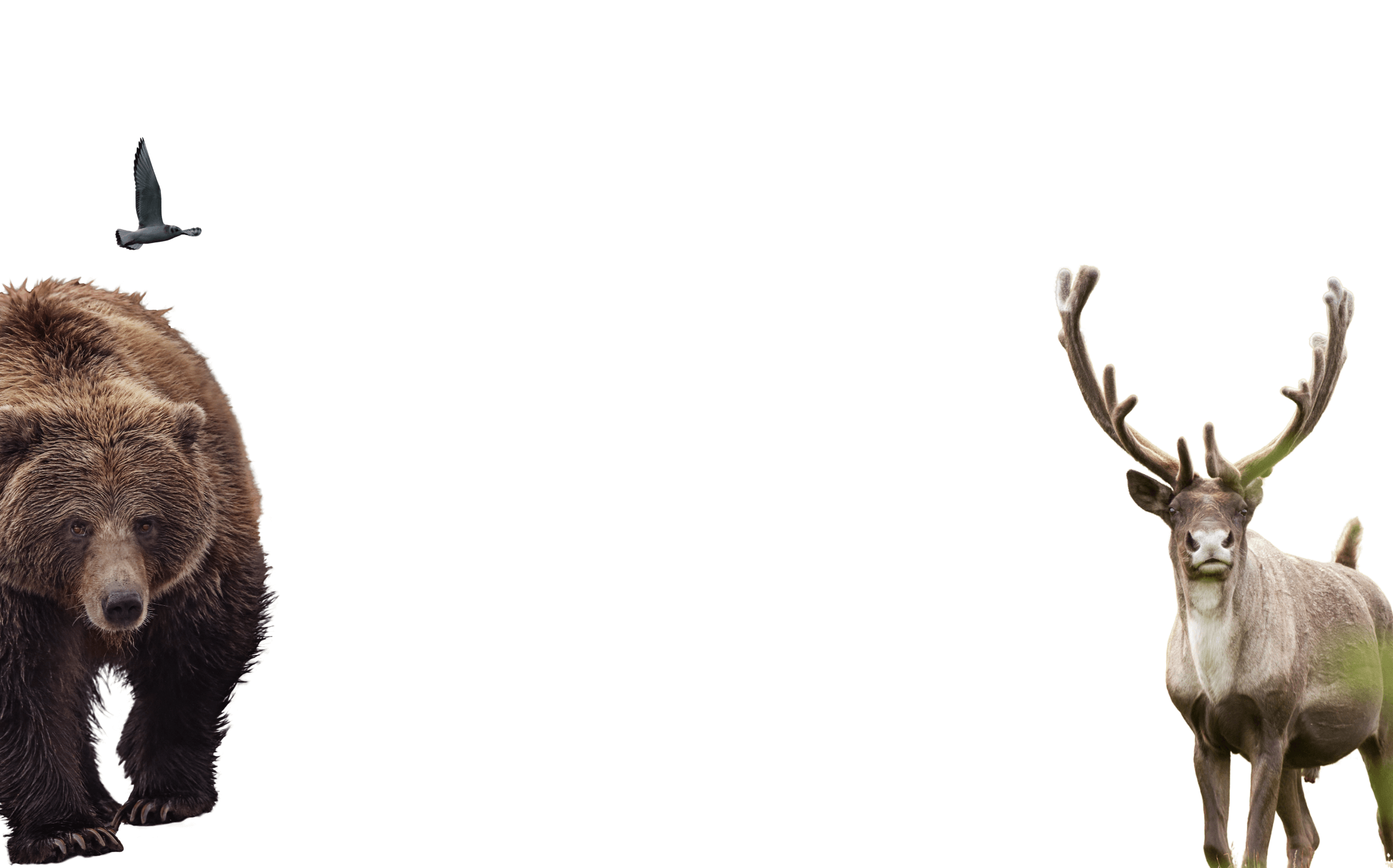
Statements vs Facts: Do government statements always align with evidence?
May 19, 2025
- •
- •
- •
Meanwhile, the evidence that is available mostly contradicts Loewen’s statements, suggesting that these decisions are unsustainable and could have devastating consequences on wildlife.

Grizzly bears are listed as threatened in Alberta. Photo © C. Olson
By Ruiping Luo
Read the PDF version here.
Alberta saw a lot of changes in the past year for wildlife management which has expanded hunting and trapping opportunities in the province. But was there any justification for the changes? Todd Loewen, Alberta Minister of Forestry and Parks, seems to say there is, but AWA’s repeated requests for evidence have been largely ignored or dismissed.
Meanwhile, the evidence that is available mostly contradicts Loewen’s statements, suggesting that these decisions are unsustainable and could have devastating consequences on wildlife. Here, we looked at some of the statements made by the government and compare them to actual evidence available on the topic.
This is part 1, as we examine a change affecting Alberta’s threatened grizzly bears.
The policy change: The Wildlife Act was amended in Jun 2024 to allow “problem” animals to be hunted by licensed hunters, instead of leaving it to trained professionals to deal with. “Problem” animals are those involved in conflict or in an “area of concern,” and included threatened grizzly bears.
What the government said: Grizzly Bear numbers have increased from approximately 800 to more than 1,150 (Government of Alberta News: Protection of life and property from problem wildlife, June 2024).
The evidence: In 2010, the Status of the Grizzly Bear (Ursus arctos) in Alberta report estimated 691 individuals, of which 359 were mature and capable of reproducing. The province provided a broader estimate of 700 to 800 bears. In 2021, Alberta announced a population of 865 to 973 bears, based on extensive surveys by fRI Research. Assuming exponential growth, a common model to describe recovering grizzly bear populations, that means an overall population growth rate of between 0.7 to 3.2 percent per year. To reach 1,150 bears in 2024, the population growth would need to be between 5.7 and 10 percent per year, or about double the rate prior to 2021. While this growth rate is not impossible, it seems unlikely, especially as no data was provided to support the recent numbers.
[Correction: Grizzly bear population numbers announced by the government of Alberta in 2021 are calculated in the Addendum to the Alberta Grizzly Bear Recovery Plan, and in fact reflect 2016-2017 estimates. The Minister has not provided any information on how the most recent numbers were obtained. Grizzly bear population data for the province was obtained from studies between 2004 to 2018, and requires updating. The Grizzly Bear Recovery Plan recommends population surveys every five years.]
What the government said: Grizzly bear recovery has been successful. Alberta’s Grizzly Bear Recovery Plan remains in place. (Todd Loewen, Minister response to AWA concerns on hunting “problem” grizzly bears, Nov. 2024).
The evidence: According to the Grizzly Bear Recovery Plan, grizzlies were listed as Threatened in Alberta partly because “the population was estimated to be less than 1,000 mature individuals.” In grizzly populations, mature individuals generally make up roughly half of the population or less. One of the priorities listed in the recovery plan is “to resolve human-caused mortality,” including killing problem bears and hunting. Rather than allowing the general public to hunt “problem” bears, we should be working towards coexistence and reducing any conflict and killing of bears. A population of 1,150 bears likely means a mature population of only 500 or 600 bears, far from the numbers needed for the population to be considered recovered.
What the government said: In 2020 there were three attacks; 2021 recorded a total of nine attacks by black and grizzly bears, contributing to a total of 104 attacks from 2000 to 2021 (Government of Alberta News: Protection of life and property from problem wildlife, June 2024).
The evidence: A thesis study of fatal bear attacks in Canada found eight fatal attacks by grizzly bears in Alberta between 1990 and 2023, and three by black bears. Parks Canada data indicates six attacks (fatal or non-fatal) by grizzly bears between 2010 and 2023, and four black bear attacks in Alberta. While these sources are not able to provide a complete record for bear attacks throughout Alberta, there is a huge gap between these records and the number provided in the news release.
What the government said: Over the last number of years, the annual average has been about 20 grizzlies killed per year from negative human interactions (attributed to Todd Loewen, reported by St. Alberta Gazette, July 2024).
The evidence: Grizzly bear mortality rates in Alberta consistently indicate 20 to 28 bears were killed as “problem” wildlife per decade, or an average of two to three bears per year, and around the same number are killed in self-defence. Interestingly, the recent 2013-2022 report, published after the changes that allow grizzly hunting, states that 57 bears were killed between 2013 and 2022 as a result of “agency removals,” a category that appears to have replaced the “destroyed – problem bears” record. It does not distinguish why the bear was killed, whether it was by accident, or for being a “problem bear,” for example. This new, broader category will make it more difficult to track how many problem bears are euthanized each year.